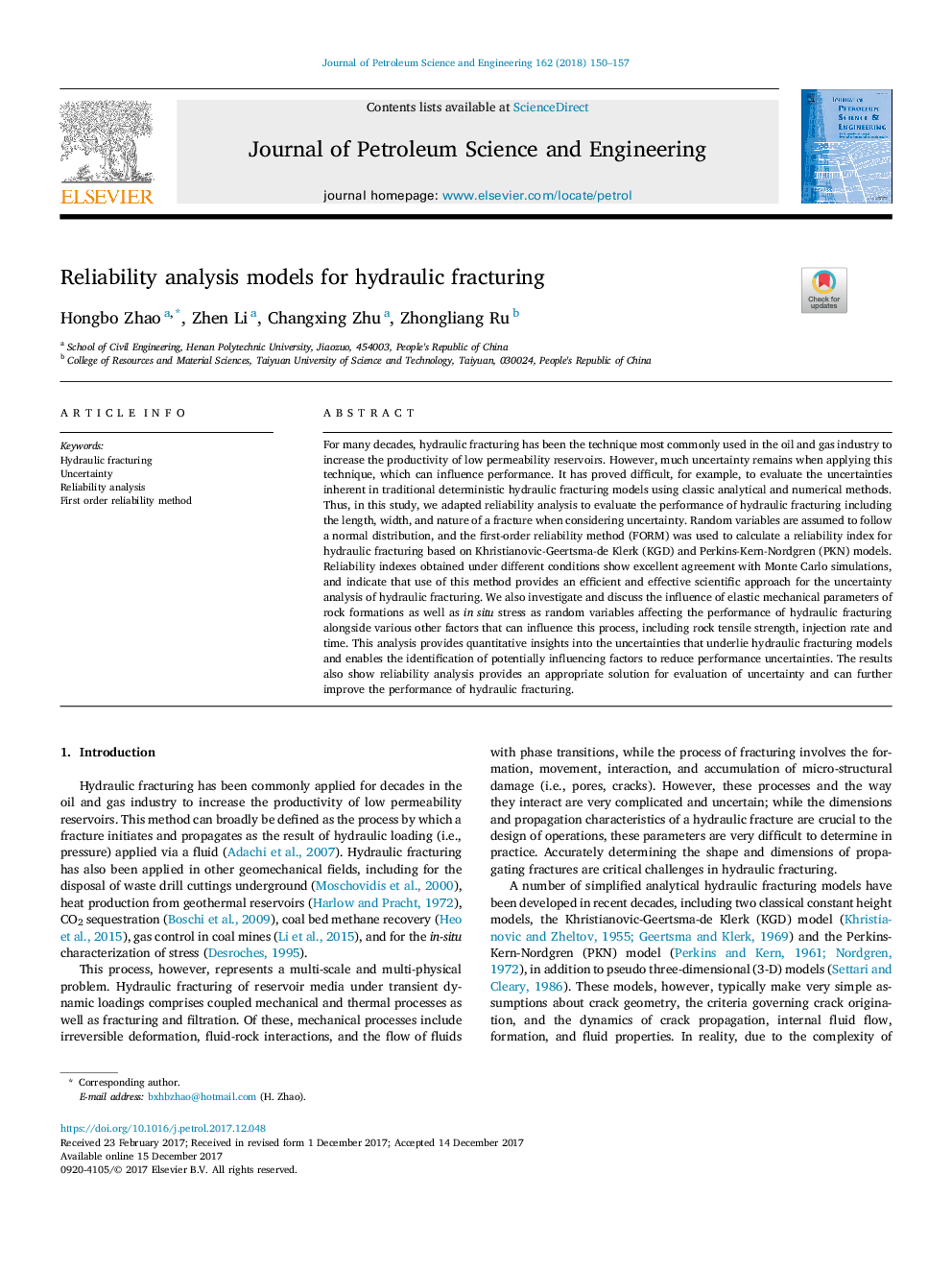ترجمه فارسی عنوان مقاله
مدل های تحلیل قابلیت اطمینان برای شکستگی هیدرولیکی
عنوان انگلیسی
Reliability analysis models for hydraulic fracturing
| کد مقاله | سال انتشار | تعداد صفحات مقاله انگلیسی |
|---|---|---|
| 140137 | 2018 | 8 صفحه PDF |
منبع

Publisher : Elsevier - Science Direct (الزویر - ساینس دایرکت)
Journal : Journal of Petroleum Science and Engineering, Volume 162, March 2018, Pages 150-157
ترجمه کلمات کلیدی
شکستگی هیدرولیکی، عدم قطعیت، تحلیل قابلیت اطمینان، روش اول روش سفارش،
کلمات کلیدی انگلیسی
Hydraulic fracturing; Uncertainty; Reliability analysis; First order reliability method;

